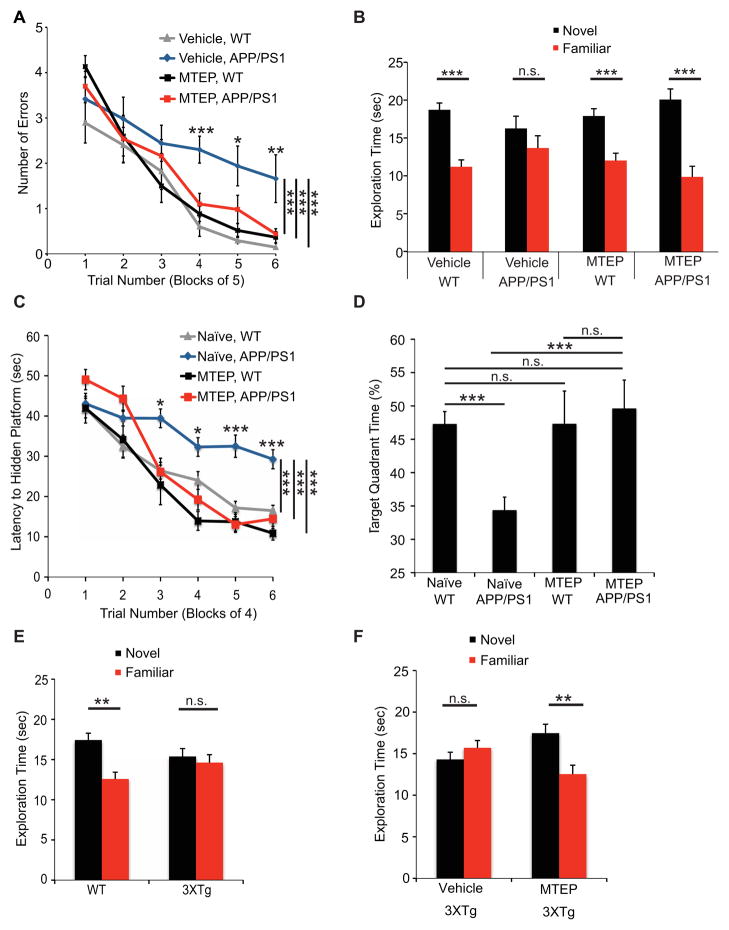Figure 7. mGluR5 Antagonist Reverses Learning and Memory Deficits in AD Mouse Models.
A Spatial learning is plotted as the number of errors in finding a hidden platform in a radial arm water maze at age 9 months. Mean±sem for vehicle treated C57BL/6, n=11; MTEP treated C57BL/6, n=12; vehicle treated APP/PS1, n=10; MTEP treated APP/PS1, n=10. Performance differed across the last 15 swims by genotype and treatment (two-way RM-ANOVA APP/PS1, P<0.001; MTEP, P<0.001). There was an interaction between genotype and treatment (two-way RM-ANOVA APP/PS1xMTEP P<0.001). By Tukey post-hoc pairwise comparisons across trials, the vehicle-treated APP/PS1 group differed from each of the other groups (P<0.001), while none of the other groups differed from each other (P>0.05). For indicated trial blocks, the vehicle-treated APP/PS1 group differed from each of the other groups (*P<0.05; **P<0.01; ***P<0.001), while none of the other groups differed from each other (P>0.05).
B Time spent with a novel object for the same mice as A: vehicle C57BL/6, n=11; MTEP C57BL/6, n=12; vehicle APP/PS1, n=9; MTEP APP/PS1, n=9. After being acclimated to an object, vehicle APP/PS1 mice showed no preference for a novel object (two tailed Student’s t test P>0.05). The other 3 groups showed preference for a novel object (two tailed Student’s t test P<0.001).
C Spatial learning is plotted as latency to find a hidden platform in a Morris water maze at age 9 months in a cohort different from A. Mean±sem for untreated (naïve) C57BL/6, n=32; MTEP treated C57BL/6, n=13; untreated APP/PS1, n=38; MTEP treated APP/PS1, n=17. Performance differed across the last 16 swims by genotype and treatment (two-way RM-ANOVA for APP/PS1, P<0.001; for MTEP, P<0.001). There was an interaction between genotype and treatment (two-way RM-ANOVA, APP/PS1xMTEP P<0.001). By Tukey post-hoc pairwise comparisons across trials, the vehicle-treated APP/PS1 group differed from each of the other groups (***P<0.001), while none of the other groups differed from each other (P>0.05). For specific trial blocks, the untreated APP/PS1 group differed from each of the other groups (*P<0.05; ***P<0.001), while none of the other groups differed from each other (P>0.05).
D Performance during a 60 sec probe trial, 24 h after learning, where time spent in the target quadrant was measured. Random chance is 25%. Mean±sem for the groups in C. Target quadrant time differed by genotype and treatment (two-way ANOVA APP/PS1, P<0.001; MTEP, P<0.01). There was an interaction between genotype and treatment (ANOVA, APP/PS1xMTEP P<0.001). By Tukey post-hoc, the untreated APP/PS1 group differed from others (P<0.001), while none of the other groups differed from each other (P>0.05).
E WT and 3XTg mice of the same genetic background at 8–9 months of age were tested for novel object recognition. WT mice show preference the novel object (two-tailed Student’s t test P<0.05), but 3XTg mice show no preference (P>0.05). Mean±sem.
F The effect of MTEP administration on object recognition is tested in 3XTg mice at age 8 months. Mean±sem for vehicle 3XTg, n=12; MTEP 3XTg, n=8. Mice that received MTEP had a significant preference for the novel object (two tailed Student’s t test P<0.01) while vehicle 3XTg mice showed no preference (two-tailed Student’s t test P >0.05).
See also Fig. S6.

